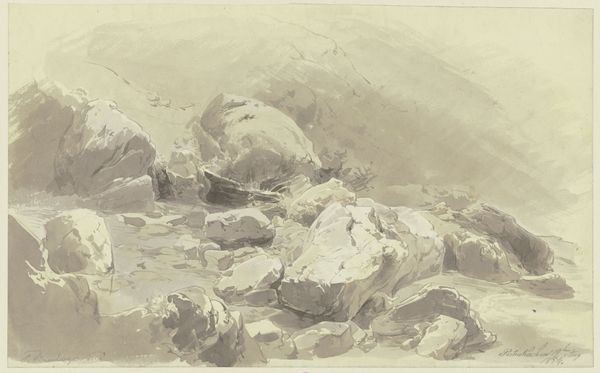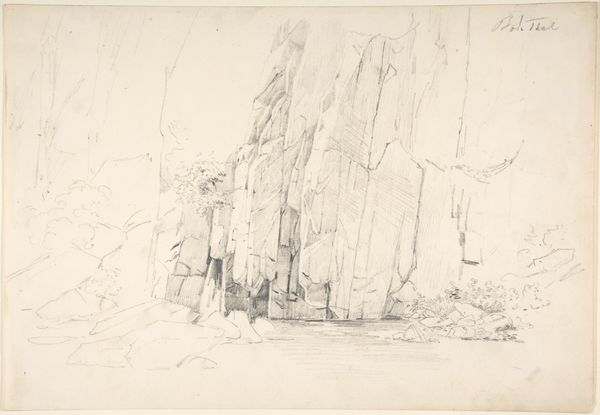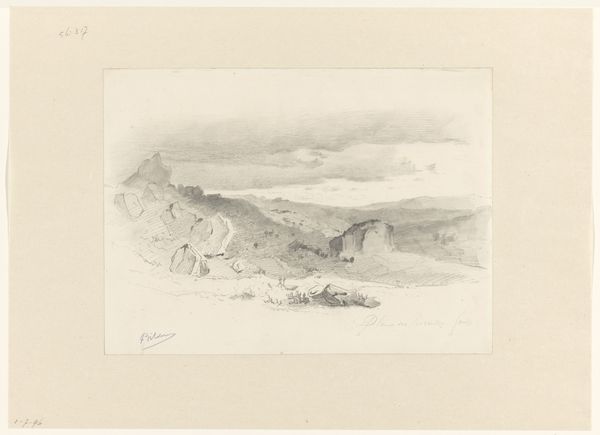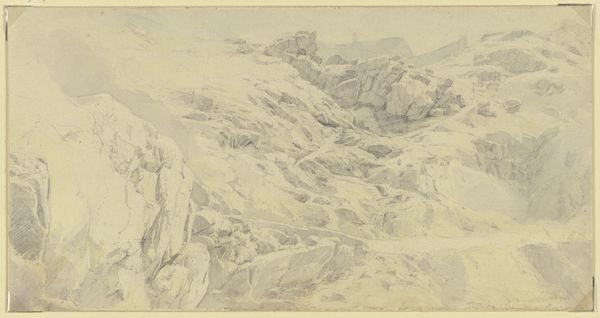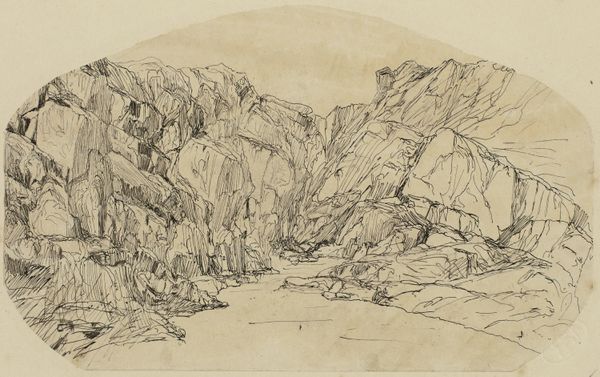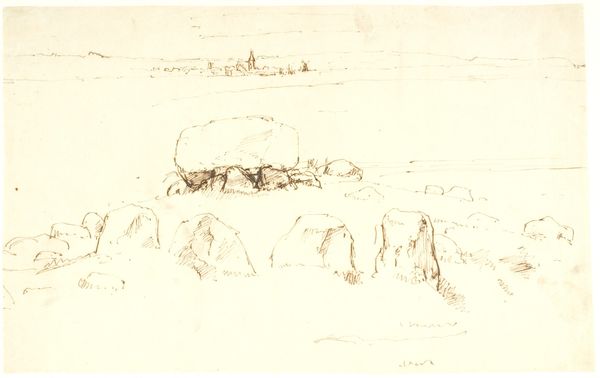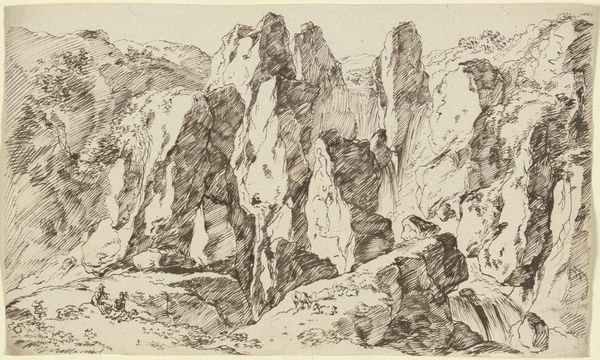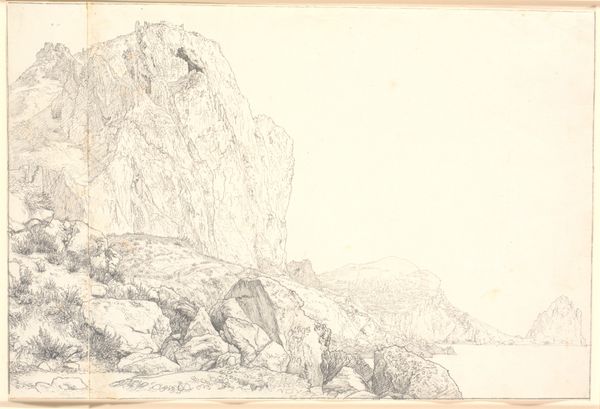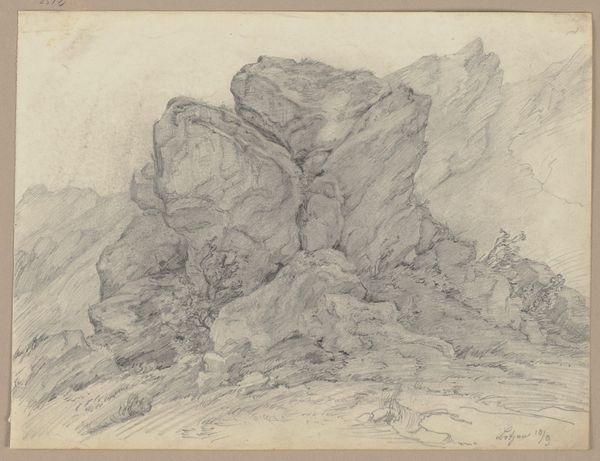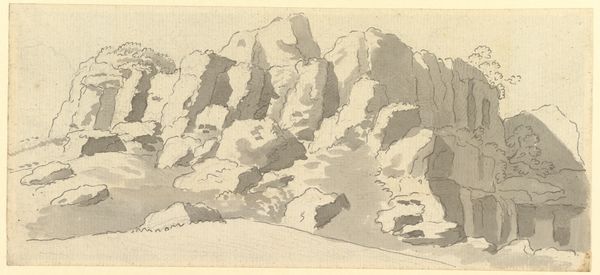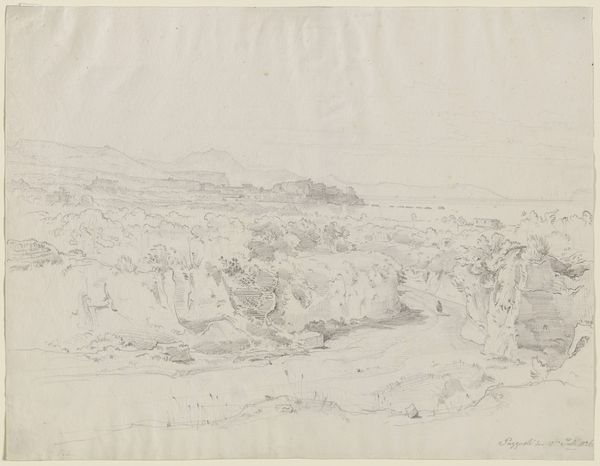
drawing, pencil, chalk, charcoal
#
drawing
#
16_19th-century
#
landscape
#
pencil
#
chalk
#
charcoal
#
realism
Copyright: Public Domain
Hans Thoma created "Brunhildisfelsen" as a pencil drawing on paper in 1894. During the late 19th century, a period defined by burgeoning industrialization, artists turned to nature in search of spiritual solace and national identity. Thoma’s depiction of the Brunhildisfelsen, a rock formation, resonates with German Romanticism which saw the natural world as a mirror reflecting the human soul. The rocks, stoic and steadfast, evoke a sense of timelessness, offering refuge from the rapid changes of the era. Yet, this artistic choice also taps into the cultural narratives of the time, referencing the mythical figure of Brunhilde. Brunhilde, a powerful female figure from the Nibelungenlied, embodies strength and independence. As a subject she was often reclaimed during the era for a burgeoning feminist movement. Thoma’s drawing invites us to contemplate the intersection of nature, myth, and identity, reflecting both the cultural anxieties and the resilient spirit of the late 19th century.
Comments
No comments
Be the first to comment and join the conversation on the ultimate creative platform.

